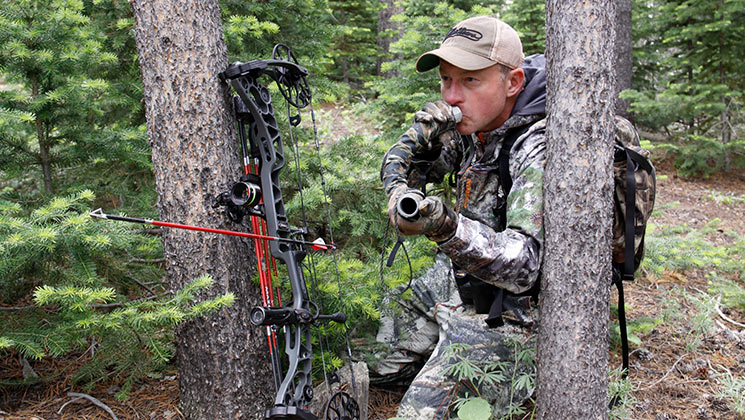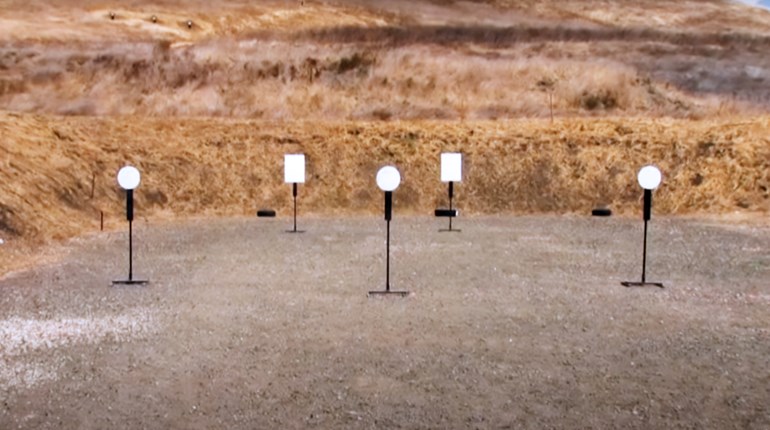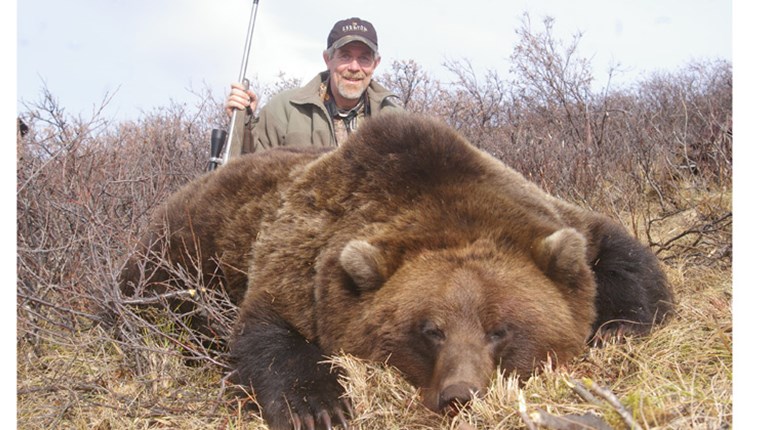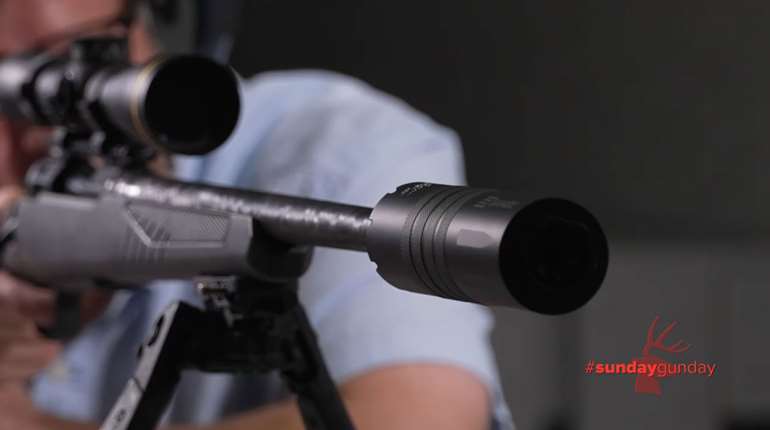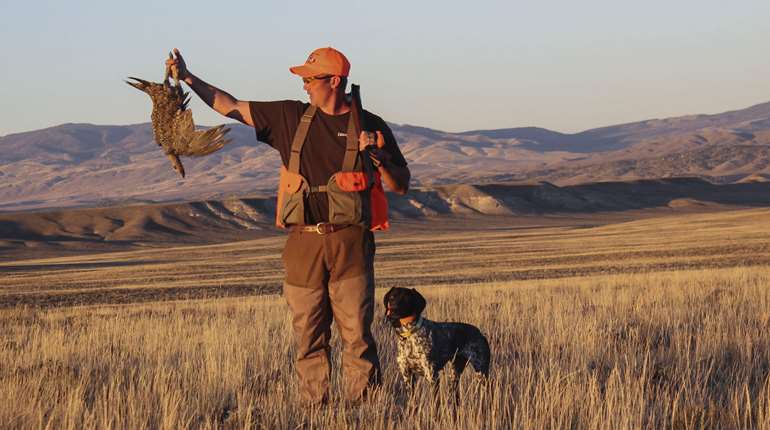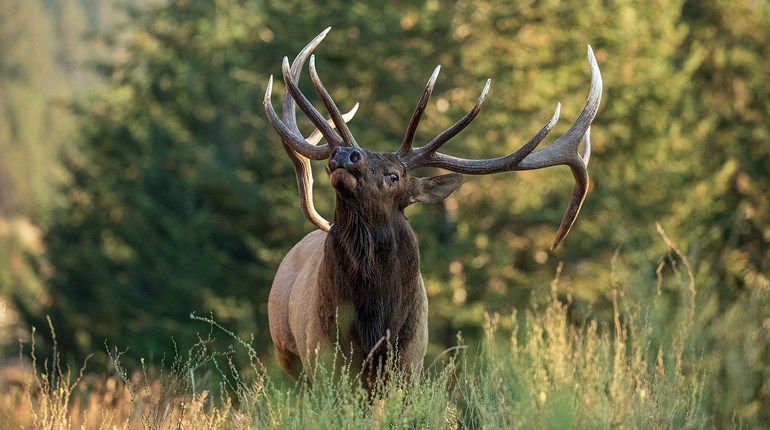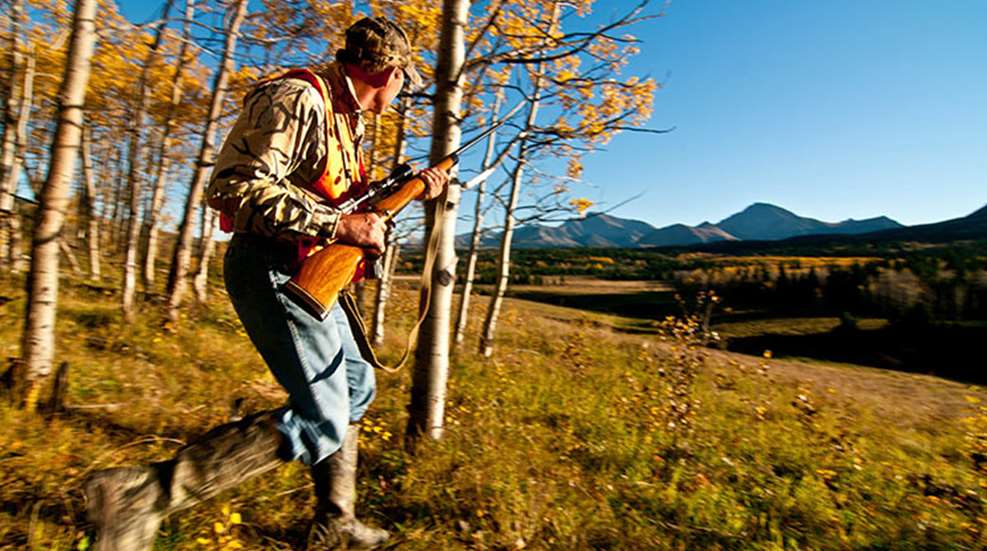
“Run, don’t walk through life”: That simple phrase from a high school mentor was taking on increasing significance as the bugling bull’s screams faded around the corner of a steep, rock-strewn mountain. Beyond was a jungle of dog-hair pines and a series of north-facing basins. Once the trotting herd entered this public-land setting of unlimited lairs, the odds of finding them again was as likely as one of my preseason trail cameras capturing E.T., even with a pile of Reese’s Pieces as bait. If I was going to be successful I had to run, not walk!
Running was not an issue; I took off in pursuit of the small herd. Living in elk country helps maintain my physical fitness, but I quickly realized my two legs were highly inadequate compared to my quarry’s four. The elk simply had additional forward thrust. Plus, my short legs couldn’t vault the same distances as the long-legged elk I followed. Add the weight of my bow and a backpack, and the warming sun, and my hope to finish with the herd was petering out like Anthony Weiner’s political career. (Yes, that was a pun.)
Sweating profusely and gulping air, I slowed my jog and put on my Nikon to scan the far side of the canyon. The elk weren’t clambering up the opposite side, so I had to assume they stayed on the shady side of the mountain and were now silently shopping for a room. It was time to slow it down and walk.
Thirty minutes later, rounding a bend in the mountain, I slammed into a bouquet of elk aroma. They were close and, unlike Weiner, I had a chance to bring my hunt back to life.
Even Elk Know When to Run, When to Walk
Elk hunting is a lot like life. You need to realize when to run and when to walk to seize an opportunity. Elk appear to follow this same mantra. Fortunately, their evolutionary history advanced adaptations to support a running regime when required and a transition to a walk when conditions necessitate a more judicious approach.
In the book North American Elk and Ecology, esteemed wildlife biologist Valerius Geist describes elk escape mannerisms this way: “The elk evolved into a fairly competent long-legged ‘cursor’ (Gambaryan 1974, Geist 1998). Its goal is to escape predator by a strategy of rapid and sustained flight while trying to disorient pursuers by various tricks and, thereby, to lose itself in vast expanses.”
Modern elk live in a rugged landscape cluttered with brush, boulders and other obstacles they can easily maneuver over and around quickly by using their long legs. This speeds them across terrain that slows predators, including you. By holding their heads high and using generously sized eyeballs, they avoid tripping over flora and other hitches for high-speed travel from one habitat to another.
In layman’s terms, elk have the ability to leave you or a grizzly bear in the dust when they press their foot to the accelerator. You see this with pressured herds as they gather at dawn and set in motion a rapid retreat to sanctuary for the day. At dusk they may repeat if they feel the need for speed to reach feed promptly.
You also experience elk speed if you’ve ever bumped a herd and attempted to catch up to the diminishing thump of hooves in the forest. It’s impossible to keep those thumps within earshot if the herd decides you’re a threat.
Not surprisingly, elk also embrace a walking existence. They know running and trotting puts danger in the rearview mirror, soon to be lost from sight. But as advantageous as a speedy getaway is, new hazards may lie ahead that even big eyeballs and superior olfactory senses can’t detect while on the fly. Once elk feel confident they’ve put ample real estate behind them, they throttle back to a walk as they evaluate options for daytime cover.
“Heavily hunted elk also may ‘stalk’ through forest, moving a few steps at a time, then stopping to look and listen,” notes Geist. “Pursued elk become very dependent on cover, and their movements may become erratic.”
Geist continues with something elk hunters experience when they do venture into the thick stuff: Bedded elk are nearly impossible to sneak up on, especially when the herd acts together as a security system watching all angles for approaching menaces.
To rise to the challenge of elk that rarely utilize cruise control you need to mimic their run-and-walk actions. Know when to run and know when walk, and you’ll fare better in the elk woods.
Time to Run
As I was subject to in the beginning, when elk leave the area it’s time to increase your speed if you hope to engage the herd later. You may be able to follow with just enough speed to determine their ending destination … or not. Other circumstances also require an Adidas approach. Of course there’s the dreaded “bump” that can speed up elk. After that, the second most likely scenario is the morning chase.
Elk have a knack of arriving overnight at the best feed in the area. They’ll tease and torment you all night long in September, even beyond that as they bugle and squeal incessantly in the dark. At dawn (almost always before shooting light), the starter’s pistol goes off and the race begins as the entire herd sprints for the steepest and darkest hideout in the neighborhood.
As a herd of elk gets up from an afternoon siesta, they’ll compete in a reverse race heading toward water and feed. In my opinion, the dawn dash appears to possess a touch more enthusiasm, although I have kicked it into high gear on afternoon hunts also trying to keep up with eager herds. Your only chance for a rendezvous is to either keep up or pre-position, and gamble they’ll pass by a cutoff point.
Parrey Cremeans, a native of Northern California, is a Mossy Oak big game regional pro staff manager for the Northwest. His passion for elk includes operating Just for Hunting Outfitting with a partner. Cremeans understands elk have a lead foot, yet they can switch to a feather foot in an instance.
“It’s a misconception to expect that you’re going to be able to run or chase down an elk,” suggests Cremeans. “We’re talking about an animal that walks at 5 mph and a human, at best, can walk at 1.6 mph in mountain terrain. Still, there are times when you may be able to follow elk and keep pressure on them with calls. If the elk reach an obstacle or area where they hold up, or simply tire of your pestering, you may have a chance to call a bull back into close range.”
While hunting open or desert terrain, Cremeans has encountered elk that travel 7 miles or more, one way, at daybreak. That may become mission impossible when trying to keep up. On the other hand, rugged mountain terrain may cause elk to slow more rapidly. Obstacles, such as box canyons or vertical slopes, influence the distance and speed of elk on the go. Cremeans has two solutions: stay as close as possible to a mobile herd or gamble. His roll of the dice involves circumnavigating the moving herd and cutting them off at the pass.
“If you’re hunting a herd and you’re familiar with the terrain, try and get in front of them. Make them come to you,” he stresses. “You have an advantage and they are coming to you. Pushing or following an animal is difficult. But if the wind and terrain allow, get in front as they approach a bedding area.”
Unlike whitetails that spook at any foreign sound in the woods, you don’t have to necessarily be in stealth mode while trying to get ahead of a herd. A herd of elk generally makes a lot of noise when on the move over and above vocalizations. Even if you snap a branch or dislodge a rock—to an elk it may signal that a satellite bull is entering the fray. Cremeans actually favors more noise as he moves since he’s likely been calling to the herd to get them to reveal their intentions. As long as his calling sounds authentic, additional sounds only authenticate the situation.
Knowing the destination of elk isn’t always probable, so when he finds himself in tow with no chance to pass the herd his strategy is to keep up the pressure with bugling. Its purpose is to force a confrontation. During this jog, Cremeans hopes the cows reach their end destination, the terrain causes elk to slow or the bull simply tires of being pestered. Any or all can cause an Old West showdown.
While on a bowhunt in Oregon, Cremeans was keeping pace with an active herd of elk but the bull was not taking the pressure well and detoured into a steep dodge to shake Cremeans’ faux contender. Cremeans kept pace, and when the cows hit a particularly nasty section of mountain they didn’t want to traverse they reversed direction. Cremeans was in the only exit lane for the herd, with visions of punching his tag.
“Before I knew it the herd was passing by and this time the bull had no choice. He had to challenge me,” recalls Cremeans. “Unfortunately, time and terrain were not on my side. He came by, but it was fast and he passed through some thick terrain as he bugled his warning. I never got a shot, but I did see the show.”
Time to Walk
If you do speed up your hunt, be safe about it. You might not see the brake lights in the elk woods. Your cue could simply be sudden silence of a chatty herd. The bouquet blast of elk aroma also signals a time to slow down to a walk. Of course a timber-shattering bugle at point-blank range when you’re still in Adidas mode also demands a skidding halt. You can continue the sprint, but you might run smack-dab into the wide-eyed stare of a worried wapiti.
Luckily, you’ll often receive a cue when it’s time to quit the race and begin prowling. As a herd moves fluidly toward a midday rest, chatter, including bugles, begins to tail off. It’s as if the herd realizes the vocalizations could pinpoint their exact stopping point. They’re right. Even heated bulls bugling assiduously to keep the cows collected tone it back when the bedroom door opens.
Coursing into a wallow or a series of the muddy pools should also prompt the caution flag. During the course of the rut bulls may visit a wallow site 24/7, especially wallows veiled behind a screen of timber. If a mobile herd passes by a wallow there’s always the chance the herd bull may slog in for a splashdown moment and an even higher chance a satellite will peel away for a quickie.
In the afternoon, it really pays to slow it down around wallows as herd bulls have been known to slip away for a soak. Restless satellites could also be loitering at the pool.
A final reason to slow down is simply because you may be in a high-density elk area. Though elk retire into cool, dark recesses to bed for the day, the anxiousness of the rut and unexpected hunting pressure could incite movement.
Monitoring the environment for fresh elk sign alerts you to elk bedding cover or a restless herd. Look for fresh rubs, especially clusters of rubbing activity announcing the presence of anxious bulls. Are there fresh tracks in the mud at water sources and in the dirt on trails? Of course check every pile of elk droppings. If you spy glistening droppings and they squish between your fingers, elk could be within shooting range already, especially if the musk of elk hovers around you.
What you do next depends on time of day and terrain. Elk country is notorious for shifting winds based on thermals as alpine heating and cooling alters wind direction. Terrain has the same effect. Gusts may hit a cliff face and bounce a different direction than you anticipated.
“Lot of times it’s best not to be in a hurry if you followed elk into bedding cover,” advises Cremeans. “With elk, scent control is the most important aspect of the hunt, and you should do everything in your power to keep your scent away from them. Staying downwind is the only sure thing. Hold tight until the wind settles into a constant direction and then make a move if the situation allows.”
Impenetrable cover or inconsistent winds signal for you to wait until the herd makes a late-day move. If luck prevails, navigable cover and consistent breezes may allow you to walk (tiptoe) into a herd. If you can pull off this ploy and place yourself on the edge, or even on the inside of the herd, you could be in for a close encounter of the elk kind.
If Cremeans doesn’t have a midday herd located, he stays on ridges and uses bugles, or cow calls, to incite an inflammatory response from a bedded bull. Sometimes his rapid pursuit pays off and ends in the herd’s bedroom.
“Say you’re following and they clamp up ahead of you—it’s likely they bedded and you’re already in their bedroom,” suggests Cremeans. “What you do next depends on terrain and if you feel they bedded while you pressured them from behind with bugles.”
He studies the cover and if thick enough he’ll slip toward the suspected bedroom. Of course too much concealment helps you, but it also hides elk. Cremeans warns that despite elk being 800 pounds of noisy creature, they can hide better than a Bigfoot.
“You can sneak around and still-hunt where they are bedded, but don’t be surprised when one stands up and stretches right in front of you. If you do pull this off and slip into a herd unnoticed, it’s a great situation. The cows are comfortable and don’t want to leave, but a challenge from you can make it ‘game on,’” says Cremeans.
You don’t want to push too far into a herd. A bugle blast from too close can spook a herd. In addition, every additional step into a bedroom increases the likelihood you’ll be busted. After spying the first cow, Cremeans suggests you should place yourself between it and where you believe the bull to be to spark engagement when you bugle.
Slow Down for Your Partner
There’s another factor that influences whether you run or walk during your elk hunt: hunting partners. As an outfitter and guide, Cremeans is always quick to evaluate the capabilities of his companions, and clients. He continues by surveying the person the first hunting day and adjusting stalking speed accordingly.
“Absolutely I’ve had hunters I had to wait for,” Cremeans recalls. “That said, I say ‘shame on a guide for not knowing his client.’ It doesn’t do you any good to get to the game before the client, so set your pace to their abilities.”
Then there is the client who shares his opinion with guides: the guy who openly questions whether it’s wise to risk bumping elk by hunting too aggressively or whether guide and client risk losing a herd due to a lackadaisical approach. Cremeans has this solution: “I try to involve the client in hunting decisions. I ask him his advice on whether he thinks we need to move quickly or slow it down. He then becomes part of the decision-making process and it actually works to motivate him more, especially in tough pursuits.”
Slammed with Scent
Two possibilities lay before me as fresh elk scent wafted in the air. One scenario was the elk had just passed. By rubbing up against vegetation and urinating on the ground, they left a distinctive stench that even a metrosexual could verify. Or, the second possibility was that just beyond my vision the herd was in slow-down mode as they shopped for daytime accommodations.
I shifted to 4-low and took one step, scanned 180 degrees, and took another step. Fifteen steps later I sidled up to a shady gulch for a draw-dropping moment. A huge bush in the center of the gulch below me was shaking like Elvis’ hips. Antler tips confirmed it was a bull, and a couple of cows stepped from behind the bush. I had found the herd!
With the cows feeding and the bull raking, I took several more careful steps to decrease shooting distance. That’s when the real prize stepped out. Hidden from sight directly below me was the herd bull, a wide, tall-tined specimen that was content to graze in the shadows. My rangefinder was not giving me a green light, but with all heads still buried in the grass I tiptoed 10 more steps. At 61 yards I ran out of cover. It was now or never as I knelt to stabilize for the long shot.
Although you couldn’t hear a pin drop, the bull did hear the gravel grind beneath the weight of my knee. He stared right at me, but my frozen, camouflaged form didn’t set off any alarms. A straggling cow caused him to look away, giving me a window to draw my Mathews Halon 32, settle for a second and launch.
The last sight I had of him showed an arrow sticking out of his side as he blew out of the hideout. I waited approximately 15 minutes then went back to walk mode as I trailed the escape route. A few minutes later I stood over a public-land prize: my best DIY bull to date. Believe me, I wanted to run every pack load of meat back to the trailhead in a rush to share my adventure with my family, but it was once again time to walk—this time under the heavy load of success.
Editor’s Note: Parrey Cremeans runs Just for Hunting Outfitting and Consulting; visit his site here.
